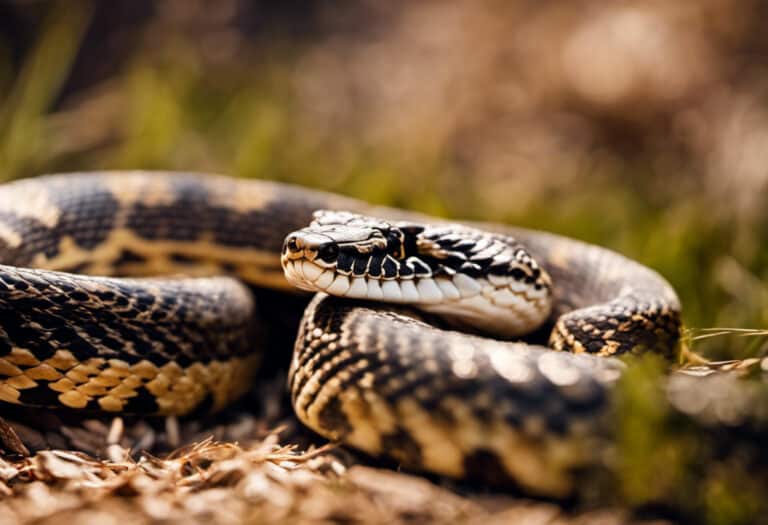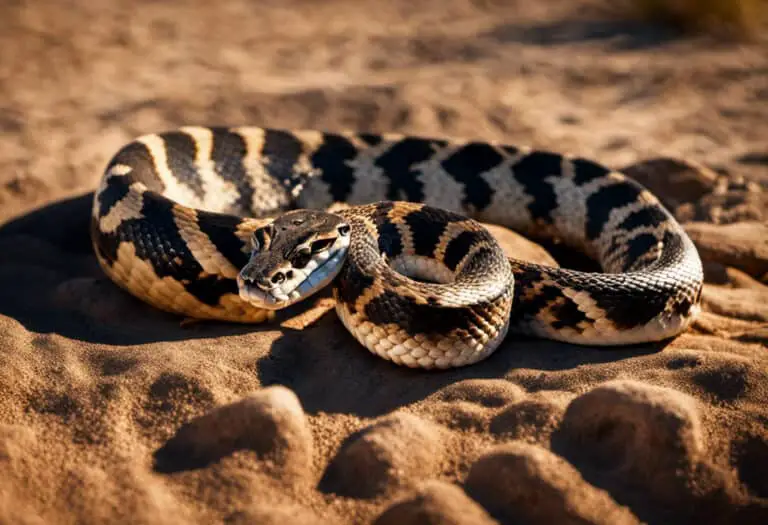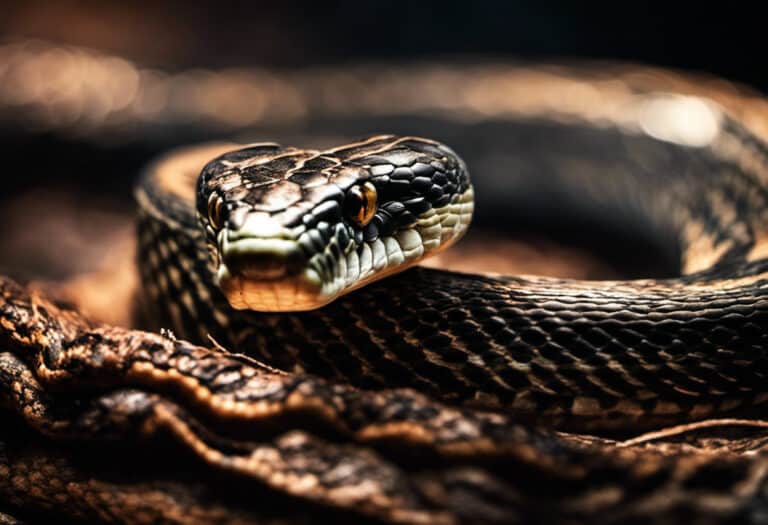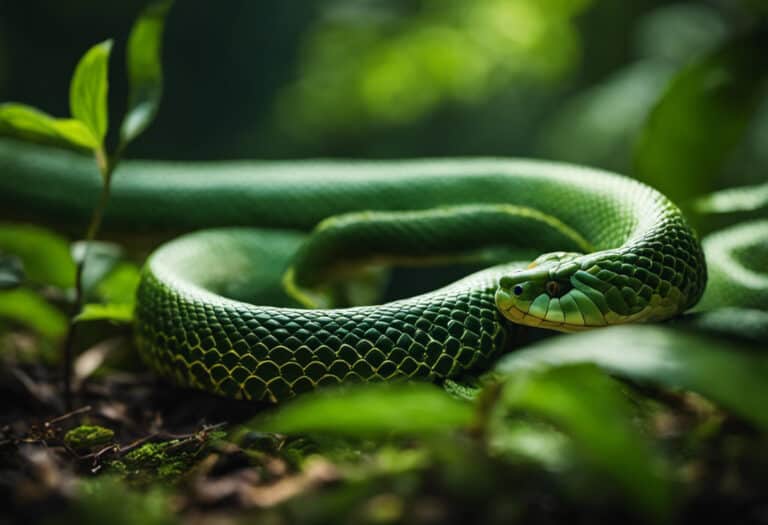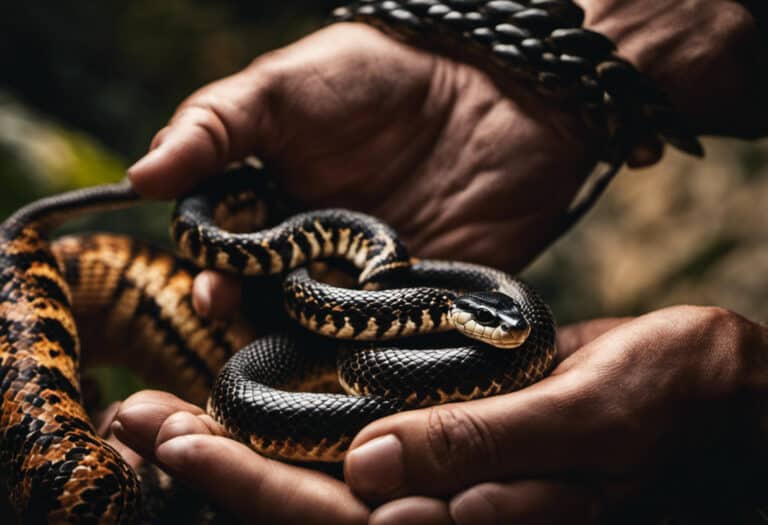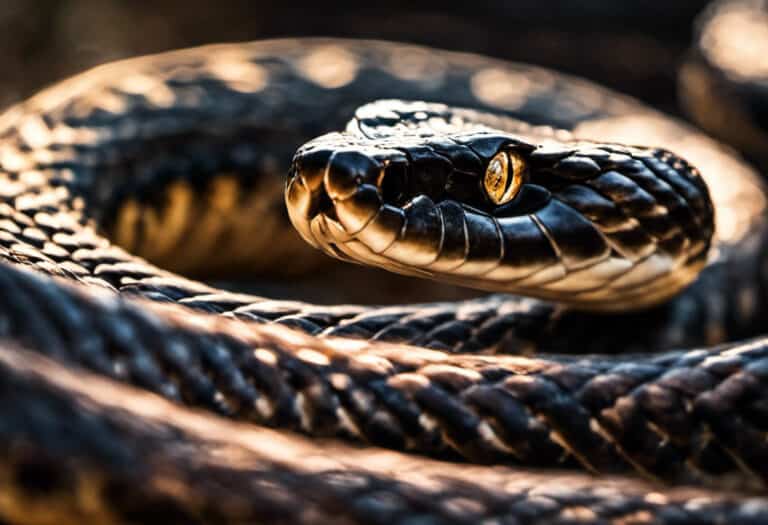The Best Snake Trap of 2023: TOP 5 Picks
Snakes are a common sight in many homes. They feed on rodents and insects and can benefit humans, especially when they eat harmful bugs like spiders or bedbugs.
However, if snakes have become unwanted guests in your house, you can get rid of them in several ways.
The most effective methods involve traps or repellents that target their tongue sensitivity, propensity to hide in small spaces, or desire to stay warm during winter.
Top 5 Best Traps for Snakes Highlight:

| Product | Best For | Where to use | Where not to Use |
|---|---|---|---|
| Havahart 1085 | Medium Size Snake | Outside and Basement | |
| Frabill Minnow Snake Trap | Small and Medium Size Snake | Outside and Basement | |
| HARRIS Supersized Snake Glue Trap | Small and Medium Size Snake | Inside | Humidity places |
| The Catchmaster Heavy Duty Snake Trap | Small and Medium Size Snake | Inside | |
| Tomahawk Model E40 One Way Excluder | Medium Size Snake | Outside and Basement |
What is the best way to catch a snake?
There are two main ways to catch a snake: baited glue traps or live traps. The best way to see a snake depends on the type of snake you are trying to catch.
Baited glue traps are the most effective for small snakes. You must purchase a commercial snake trap or make your own using a plastic container and some petroleum jelly to use this method.
Then, bait the trap with a food item that will attract the snake, such as a dead mouse. Once the snake enters the trap, it will become stuck to the sides and unable to escape. You can then release the snake into the wild or dispose of it as you see fit.
Live traps, on the other hand, are the best way to go for different sizes of snakes.
These traps work by capturing the snake alive so that you can release it into the wild unharmed. To use a live trap, you must bait it with food and check it regularly to remove any captured snakes.
Again, make sure you know what type of snake you are trying to catch so that you can choose an appropriate bait. Once you have seen the snake, release it into a suitable habitat far from human development.
Reusable vs. Disposable Traps:
When dealing with pests, there are two main traps: reusable and disposable. Reusable traps are typically made of plastic or metal and can be used repeatedly. Disposable traps, on the other hand, are only meant to be used once before being thrown away.
So, which type of trap is the best option?
There are a few factors to consider when making your decision. First, think about the size of the infestation.
- A disposable trap might be all you need if you only have a few pests. However, a reusable trap will likely be better if you have a more severe problem.
- Consider the type of pest you’re dealing with. Some pests, like moths, are attracted to light so a light-based trap might work well. Others, like snakes, are attracted to food, so that a bait-based trap could be more effective.
- Think about your budget. Reusable traps are typically more expensive upfront but can save you money in the long run. Disposable traps are usually less costly, but you’ll need to keep buying them if you have an infestation.
How to Identify a Snake Species
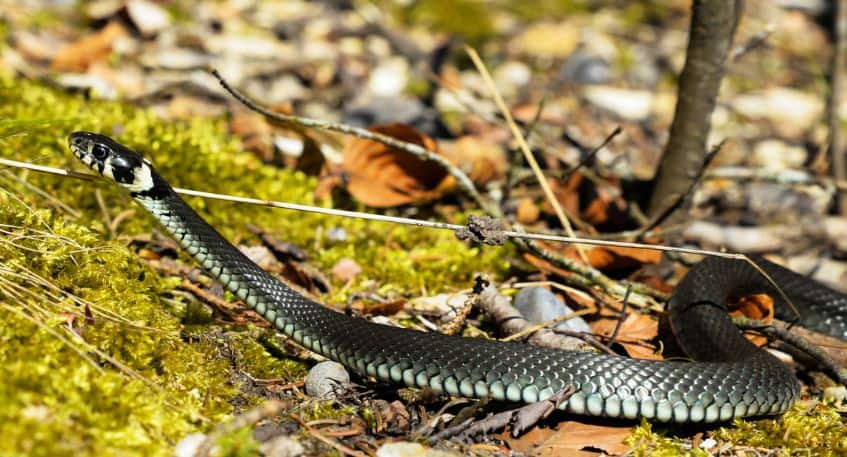
If you have a snake problem, knowing the type of snake causing it is essential.
Identifying the type of snake will help you determine which trap to use and how many snakes are in your home or yard.
With so many different types of snakes, it can be challenging to identify a particular species. Here are a few key characteristics to look for when trying to identify a snake:
- Size: Snakes can range from the tiny thread snake, less than 10 centimeters in length, to the reticulated python, which can grow to over 18 feet.
- Color: Snakes come in various colors and patterns, making them difficult to identify by appearance alone. Some common color patterns include stripes, spots, and scars.
- Head shape: The shape of a snake’s head can provide clues about its identity. For example, vipers have triangular heads, while cobras have hoods that can flare when threatened.
- Eyes: Like other reptiles, snakes have horizontal pupils. However, some snakes, such as sea snakes, have rounded pupils.
- Scales: The type and arrangement of scales on a snake’s body can offer clues about its species. For example, boa constrictors overlap large scales, while garter snakes have small scales arranged in rows.
With so many different types of snakes worldwide, identification can be a challenge. However, by looking for these key characteristics, you may be able to narrow down the list of potential candidates and arrive at a conclusion.
1) Havahart 1085
The Havahart 1085 is a medium-sized live trap that can capture snakes. It’s made with solid steel mesh to prevent escapes and bait theft by other animals. The trap has a removable door, which makes it easy to set up and use. You don’t need any experience trapping animals.
The Havahart 1085 (Diypestcontrol Link) will catch medium-sized snakes and other animals. It’s perfect for those struggling to catch a snake in their backyard or garden.
This trap has a heavy-duty spring-loaded door that closes quickly once the animal enters the cage. This helps prevent injuries to the animal while inside the cell and prevents escape by larger animals, such as raccoons, skunks, and opossums, which can easily open other types of cages.
Pros: Easy to set up, Good for medium size snakes
Cons: Not ideal for small snakes
2) Frabill Minnow Snake Trap
This snake trap is a top-rated option on Amazon, and it’s easy to see why. It features heavy-duty, vinyl-dipped steel mesh construction that provides maximum durability, even in harsh weather conditions.
The black color also provides camouflage for snakes, making it easier for them to get inside the trap.
This snake trap is 18.5″ x 8.5″ x 8.25″ when fully assembled and includes a removable bottom pan with an adjustable entry on the flat-bottom trap, which makes setting up this device simple and efficient even if you aren’t very experienced at setting up traps.
This product is saltwater & freshwater tested, so you can use it anywhere in your home or yard without worrying about damaging the equipment or your property (the trap has been designed specifically with these factors in mind).
The Frabill Minnow Snake Trap (Amazon Link) has four stakes for securing it against strong winds or moisture buildups, along with bait material such as fish parts or small lures to catch more than one snake at once.
Pros: Easy to set up, Good for small and medium size snakes
Cons: Not ideal for giant snakes
- Frabill | Trusted By Anglers Since 1938
- Heavy-duty, vinyl-dipped steel mesh construction battles open water to help you land healthy, wild minnows
- Black color provides camouflage
- Saltwater & Freshwater Tested
Last update on 2024-07-14 / Affiliate links / Images from Amazon Product Advertising API
3) HARRIS Supersized Snake Glue Trap
This supersized trap opens up a large surface area, making it ideal for indoor and outdoor use.
The sticky glue holds its power over time, so you don’t have to worry about the snake escaping – and because it uses no poisons or chemicals, it has a low environmental impact.
Setting up the trap is also straightforward; place it in the desired location and wait for the snake to enter.
However, keep in mind that traps take time to work effectively, so if you’re looking for an immediate solution, this may not be the best choice.
Additionally, one trap may not be enough to catch all the snakes in the area, so you may need to purchase several traps to achieve optimal results.
But if you’re patient and willing to put in some effort, this trap could finally be what you need to eliminate those pesky snakes.
Pros: low environmental impact
Cons: You may need to buy multiple traps
- Extra Strength – Ultra sticky glue maintains holding power overtime and traps snakes on contact
- Large Surface Area – Supersized glue trap folds open for an extra large surface area
- Multi Purpose – Catches rats, mice and insects in addition to just snakes
- No Pesticides – The trap does not use pesticides, poisons, or chemicals
- Use in Multiple Areas – Great for residences, businesses, schools, storage areas and more
Last update on 2024-07-14 / Affiliate links / Images from Amazon Product Advertising API
4) The Catchmaster Heavy Duty Snake Trap
This trap is powerful and effective for catching snakes. It does not require additional baits, making it great for beginners looking for a simple solution.
The traps are long-lasting and can be used indoors or outdoors (although they’re probably better suited to being kept indoors).
They’re straightforward: put the trap against walls and pathways you think the snake might be traveling on.
The traps are non-toxic (Amazon Link), so there’s no risk of harming your family or pets if you get some in their mouths while trying to catch them!
Pros: Non-toxic
Cons: Requires bait; you may need to buy multiple traps
- READY TO USE: Insect and Mouse glue traps are pre-scented and are intended for use without additional mouse bait. For best use, leave the mouse…
- YEAR-ROUND PROTECTION: Catchmaster glue traps for mice and rats are safe, non-toxic and mess-free. The insect and mouse traps are perforated to…
- NO MESS CONVENIENCE: The bulk pack of disposable sticky traps for mice and rats is made with professional strength adhesive and can fold into a…
- TOTAL COVERAGE: The glue mouse pad trap can be used indoors in residential, commercial, or industrial buildings, and sensitive areas where…
- INTELLIGENT PEST MANAGEMENT: At our core, we are dedicated pest detectives. We believe in utilizing a science-based approach to integrated pest…
Last update on 2024-07-14 / Affiliate links / Images from Amazon Product Advertising API
5) Tomahawk Model E40 One-Way Excluder
If you want to keep snakes out of your home, the Tomahawk Model E40 One Way (Amazon Link) Excluder Trap is an effective option. This one-way trap prevents pests from returning, making it an effective way to keep snakes out of your home.
This product is designed to catch small snakes, such as garter snakes and young water moccasins. The design of this trap makes it easy to set up while remaining safe for pets and humans alike.
The steel mesh construction of this product also allows you to use it for other animals, such as mice or rats.
Pros: Easy to set up, Good for medium size snakes
Cons: Not ideal for small snakes
- one way door
- mounting wings
- 4″x 4″
Last update on 2024-07-14 / Affiliate links / Images from Amazon Product Advertising API
Where do Snakes hide?
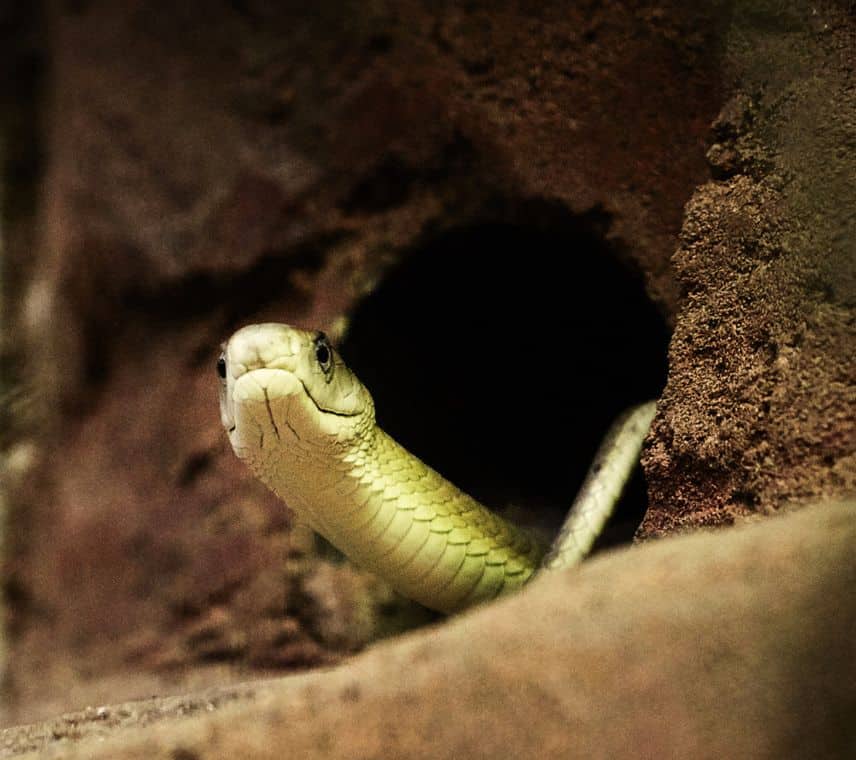
Snakes are not stupid. They won’t go into your trap if it’s obvious what it is. You must set up a trap that looks like the snake’s natural environment, or he’ll never go into it!
You can find snakes under rocks, holes in the ground, tree branches and roots, cracks in walls, and even inside piles of wood or leaves. Snakes also hide under your house or porch if they feel adventurous enough (and know how to get there).
Some snakes will even burrow their way deep underground so that nothing can get them except for people with shovels who know where to look for them, but those people don’t exist because everyone knows it’s dangerous territory!
How do you get a snake out of hiding?
Each snake is different and will likely have other preferences for hiding spots. However, a few general tips can help get a snake to come out of hiding.
- It is essential to provide plenty of hiding places in the enclosure. This will give the snake plenty of options and help to reduce stress levels.
- Try to avoid handling the snake too much. If the snake feels threatened, it will be less likely to come out of hiding.
- Try offering food as an incentive. If the snake knows that food is available, it may be more likely to enter the open.
With patience and trial and error, you should be able to find a method that works for your snake.
How to catch a snake with a Live Trap?
To use a live trap, bait it with an appropriate food source and place it in an area where you have seen snakes before.
Once the trap has been set, check it regularly and remove any captured snakes immediately. With patience, you can safely catch any snake that comes your way.
How to Make a DIY Snake Trap
You only need a bucket, some wire, and a piece of meat (snakes are attracted to the smell of food).
- First, cut a small hole in the bottom of the bucket.
- Then, thread the wire through the hole and bend it into a loop inside the bucket.
- Next, bait the trap with the meat and set it out where you’ve seen snakes before.
Check the trap regularly; you don’t want to leave an animal trapped for too long. With patience, you’re sure to catch yourself a snake quickly!
What to do With a Trapped Snake?
The best thing to do is call a professional to remove the snake safely. In the meantime, here are a few things you can do to keep the snake contained:
- Find a large container with a lid and place it over the snake. Ensure the cover is secure, as snakes can escape from small openings.
- If you have a piece of cloth or rope, you can use it to coerce the snake into the container gently. Be careful not to constrict the snake’s body, which can cause serious injury.
- Once the snake is safely contained, place the container in a cool, dark place until the professional arrives.
Handling a snake can be dangerous, so leaving it to the experts is best.
Free Snake Relocation Services Near Me:
There are plenty of organizations that offer free snake relocation services. These organizations will come and pick up the snake from your property and take it to a safe location.
They will also provide information about how to prevent snakes from entering your property in the future.
Check out this Google Map for a list of organizations that offer free snake relocation services.




